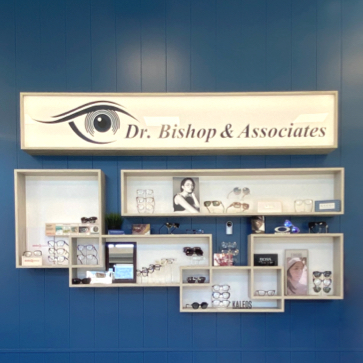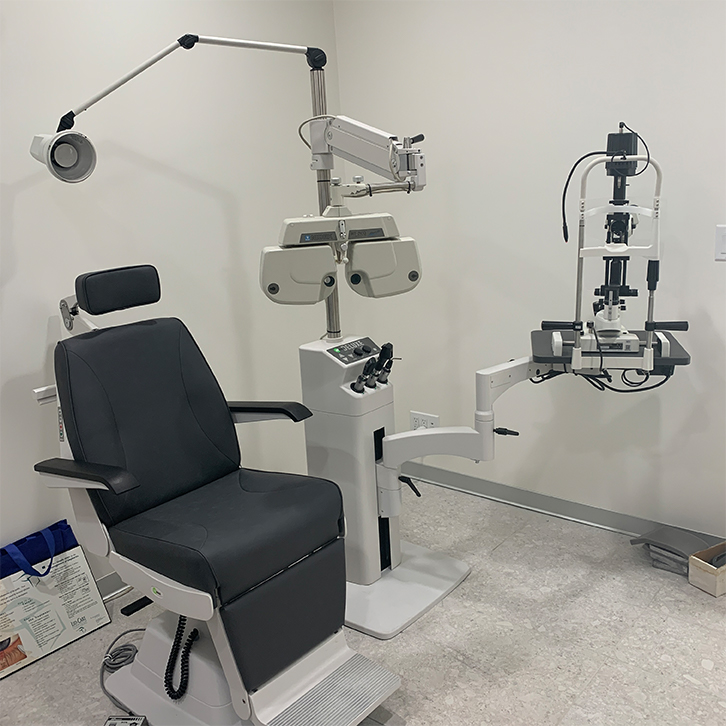Conjunctivitis, commonly known as pink eye, is an infection that irritates the surface of the eyeball and the interior of the eyelid. This results in a distinct pink colouration that varies in intensity on a case by case basis, itching, inflammation, and even fever-like warmth on the eyelids.
This common infection can seem scary, especially when it occurs unexpectedly. For general information on the condition, visit our article on conjunctivitis. For a look at how the drama of this disease has contaminated the way people think about it, keep reading.
Below we’ve compiled a list of nine of the most common myths and questions people have about the occurrence of pink eye, its spread, and its treatment.
1. Can Conjunctivitis Spread by Looking?
It may sound strange, but the idea that conjunctivitis (pink eye) can spread just by looking at someone is just a common myth. Despite its persistence—especially among playful kids and curious schoolyard chatter—there’s no medical evidence to support this claim.
In reality, conjunctivitis is not spread through eye contact. Unlike in fictional zombie movies where a glance might transmit infection, pink eye spreads through direct contact with infected tears, eye discharge, or contaminated surfaces. This is why schools and daycare centers emphasize handwashing and avoiding face-touching to prevent outbreaks.
The main ways conjunctivitis spreads include:
- Touching your eyes after contact with contaminated surfaces
- Sharing personal items like towels, makeup, or eye drops
- Close physical contact, such as hugging or face-to-face play
To reduce the risk of spreading pink eye, practice good hygiene, avoid touching your face, and wash your hands frequently. If you or your child has conjunctivitis, stay home until symptoms subside to avoid spreading the infection to others.
2. Is Pink Eye Contagious Through the Air?
It’s natural to feel cautious around someone with red, inflamed eyes. But can pink eye actually spread through the air? The short answer is no — most types of conjunctivitis (pink eye) do not spread through airborne particles.
On the other hand, non-contagious forms of pink eye are caused by irritants like allergens, pollution, or certain chemicals. These types may cause redness and irritation, but they do not spread from person to person.
To prevent the spread of contagious pink eye, practice good hygiene, avoid sharing personal items, and wash your hands frequently. If you or your child develops pink eye, it’s best to stay home until the symptoms clear up to avoid passing it to others.
3. Can You Get Pink Eye From a Fart?
This myth also tends to circulate on playgrounds and in high school quads. The story goes that if a prankster, them, “releases bad air” on your pillowcase, you’ll wind up with pink eye. Because some pink eye comes from bacteria, this might happen if said prankster wore no undergarments and you unwittingly slept on the pillowcase immediately after.
Flatulence is primarily composed of methane gas, which, while it may stink, can’t cause infection. To cause an infection, this prankster’s flatulence would have to contain an unusually high concentration of bacteria. And, because bacteria don’t survive exposure to open air for long, any plausible risk disappears after a few minutes.
4. Can Pink Eye Make You Blind?
The idea that pink eye could blind or kill you doesn’t hold a lot of water. Most of the time pink eye is a minor infection. In some cases, it even resolves itself within 7 to 10 days. It is important, however, to consult with a doctor because swelling, discolouration, and itching of the eyes may indicate a more serious condition (one that does actually endanger your eyesight).
Sufferers should seek immediate medical attention if they develop a rash, fever, or severe eye pain.
5. Is Pink Eye Just Red Eye?
Not all eye discolouration qualifies as pink eye. Many types of eye irritation cause pinkness. Pink eye results in bright inflammation on the surface of the eye. Red eye manifests as redness on or around the eye and usually indicates conditions other than allergies or infection. These conditions include:
- Foreign objects, like insects or metal fragments, in the eye
- Glaucoma
- Infection of the eye socket
- Injury to the surface of the eye, such as scrapes or sores
6. Is There Only One Treatment?
Because many people don’t know that there are many causes for pink eye, they assume the treatment for each case of pink eye is exactly the same. There are actually a range of treatment options, depending on the cause of the infection. Common treatments for each type include:
- Allergy-related: antihistamines, removal of allergens, steroid eye drops for inflammation
- Bacterial: antibiotics regimens
- Dry Eye Syndrome: moisturizing eye drops, lubricating ointments, punctual plugs
- Type I Herpes: inhibiting medications
- Viral: improved hygiene, antivirals
7. Can You Go Outside With Conjunctivitis?
Whether or not you need to limit your contact with others until your pink eye is gone depends on the type. People suffering from pink eye caused by allergies or a virus can attend school or work normally after they confirm the cause with a doctor (though they may not want to).
People with bacterial pink eye must stay home for at least a full 24 hours after they begin taking antibiotics. Then they should be ready to resume their normal activities.
8. Can You Get Pink Eye from Touching Surfaces?
If you contract an infectious version of pink eye, you will need to get rid of some things. These include:
- Contaminated contact lens cases or cleaning solution
- Disposable contact lenses are worn since contracting conjunctivitis
- Eye makeup used immediately preceding or during the infection
9. Can You Die from Pink Eye?
Most cases of pink eye are mild and do not cause too much damage. It can cause irritation and itchiness that may become difficult to bear but certainly isn’t life-threatening.
However, if your symptoms are accompanied by respiratory problems or swelling in lymph nodes, you must visit a doctor immediately. This is quite common in children who often suffer from community-transmitted viruses.
If you wear non-disposable contact lenses, consult with our doctor. In some cases, you may need to replace the lenses to avoid re-infection. You should also wash any towels, washcloths, or bedclothes you use separately from the rest of your laundry.
Pink eye can be uncomfortable and even embarrassing. If the condition manifests with pain or doesn’t respond to treatment, speak to our optometrist.
For more information about eye health and common eye conditions,browse our archive of informative articles.
Call today to book an appointment at one of our three Calgary eye clinics.



















